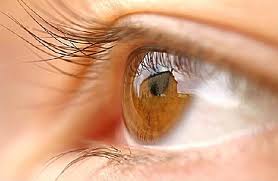Visibility down! It must be Cataract
Like grey hair slowly creeping in, cataracts cause their respective damage over time. Healthy eyes and vision are a critical part of one’s life. The eyes should hence be examined regularly. In fact, many vision problems and eye diseases can be detected and treated early. The human eye is like a camera that collects, focuses, and transmits light through a lens to create an image of its surroundings. A cataract is a clouding of the lens in the eye that affects such vision. The vision dims because the cataract prevents light from passing beyond the lens and focusing on the retina. Most cataracts are related to aging and are very common among the old.
Cataract Causes: The lens in humans lies behind the iris and the pupil. It focuses light onto the retina at the back of the eye, where an image is recorded. The lens also adjusts the eye’s focus, letting us see things clearly both up close and far away. The lens is made mostly of water and protein. Specific proteins within the lens are responsible for maintaining its clarity. But as we age, some of the protein may clump together and start to cloud a small area of the lens. This is termed as cataract.
Researchers suspect that there are several other causes of cataracts, such as smoking, diabetes, excessive ultraviolet-light exposure, the use of certain medications. Such as oral, topical, or inhaled steroids. Rarely, cataracts can be present at birth or in early childhood as a result of hereditary enzyme defects and severe trauma to the eye, eye surgery, or intraocular inflammation.
Types of Cataract
Nuclear: A Nuclear Cataract is the most common type of cataract and is age-related. A Nuclear Cataract occurs in the center of the lens. In a Nuclear Cataract, the center of the lens gradually hardens and becomes opaque. As the nucleus changes color, from white to yellow to amber, it may also become so opaque that your eye doctor can’t clearly see the details of the retina. At that point, patient might experience difficulty identifying colors and seeing distant objects. Some patients become near-sighted (myopic) as a result of Nuclear Cataract and notice an improved ability to read without glasses. As the cataract progresses, the lens may even turn brown. Seeing in dim light and driving at night may be especially troublesome. Advanced discoloration can lead to difficulty distinguishing between shades of blue and purple.
Cortical: the outside of the lens is called the lens cortex. When opacities are most visible in this region, the cataracts are called Cortical Cataracts. It starts as wedge-shaped opacities or “spokes” in the cortex (the layer between the nucleus and the capsule). The spokes extend from the periphery towards the center of the lens. As it slowly progresses, the spokes extend to the center and interface with light passing through the center of the lens. Most diabetics develop this type of cataract. Problems with glare are common for people with this type of cataract.
Sub capsular: A Sub capsular cataract develops slowly and starts as a small opacity under the elastic covering (capsule), usually at the back of the lens (posterior). A Sub capsular cataract often interferes with your reading vision, reduces your vision in bright light and causes glare or halos around lights at night. Typically, this type of cataract is found in people with diabetes or high myopia, adults with retinitis pigmentosa, and in people taking cortisone.
Symptoms: The most common symptoms of a cataract are:
- Painless, progressive blurring or dimming of vision
- Increasing difficulty with vision at night
- Glare, headlights, lamps, or sunlight may appear too bright
- A halo may appear around lights
- Colors seem faded
- Increasing nearsightedness needing frequent change of eyeglasses
- The need for brighter light for reading and other activities
- Double vision or multiple images in one eye
- The edges of stairs and curbs are difficult to discern
Cataract Treatment Options:
The treatment for cataracts is surgery by removing the clouded lens, which generally includes substituting the lens with a clear lens implant. Cataract surgery is very succesful in restoring vision. Surgery is done on only one eye at a time.
Cataract surgery is usualy done as a day-care procedure under local anesthesia and takes about half an hur. Recovery is fast. You can often resume your normal daily activities the night of your surgery.
There are no medications, eye drops, exercises or glasses that will cause catracts to disappear once they have formed.
But some self-care approaches, such as using a magnifying glass to read or improving the lighting in your home, may temporarily help you deal with the effects of having a cataract.

